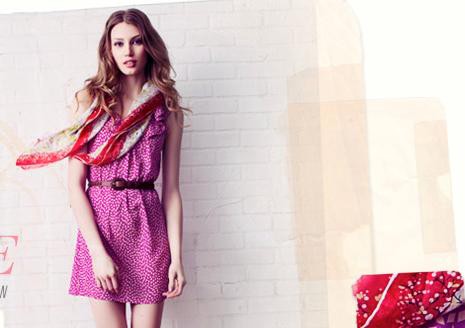Farewell to Forever 21
by Liz Colville

The family-owned Forever 21 has stood strong in the midst of the US debut of Topshop, the recession, and the persistence of other affordable women’s clothing brands like H&M, Express, and more recent imports like Mango and Zara. As for the women’s clothing brands that haven’t persisted so well — Saks, Sears, Dillard’s — Forever 21 often takes over those companies’ ghostly former buildings and moves into them. Forever 21 made $135 million in 2008, the latest earnings figure available, and it’s currently valued at $3 billion. It used to sell only one line for women; now it sells several, as well as menswear and maternity wear.
The most expensive item in the store costs $60, according to BusinessWeek, which recently published a lengthy piece on the company. Forever 21 is run by a Los Angeles-based Korean couple, who are born-again Christians, and their eldest daughter, who is 29. The items, like many of the clothes you find in so-called high street-brand stores, are inspired by designer clothes, and in some cases (from a distance), it’s hard to tell the inspiration from the original, to an occasionally incriminating degree.
The stores are sprawling and brightly lit, sometimes as many as six stories tall. They’re filled with racks of colorful knit blends that often pile up and fall off hangers too quickly for salespeople to keep up. “Please put the clothes back on the hangers before you come out of the dressing room!,” the New York salespeople always seem to be yelling. The area the company oversees has gone from one million to ten million square feet in seven years. It wouldn’t be a surprise to find out their internal motto was “More is more.” That its stores are always kind of messy and insane is part of the company’s charm. The stores may always seem overstocked, but it’s really that they are constantly prepared to be pillaged, or so it would appear, every late afternoon and weekend.
It was in the middle of the recession that I noticed the company starting to outdo itself, and old favorites of mine like H&M: catching up to more trends more quickly, revamping its website to reflect the sharp, wide-awake atmosphere of the physical stores, and even cleaning up those stores a bit. Suddenly there were more styles available, more party dresses, more men’s clothes, the maternity line, better jewelry, better bags, and so on. But the company has been dogged by accusations of unfair working conditions and underpaying employees — a group of factory workers won $4 million from the company in 2001 — and, more recently, for riffing too closely on designer clothes. Unfortunately, it’s those riffs that I usually find most appealing.
I haven’t been 21 in six years, but judging from my store companions, this is no longer just a brand for tweens and teenagers, and the company realizes it, and is eating it up, hence the monstrous real estate they seek out and quickly populate (which, naturally, some industry analysts think is a mistake). The company’s name is aspirational, and so is the rest of the fashion industry: most of the items we look at in magazines and on billboards and websites are being modeled by teenagers who wish they, too, could forever be 21 or less. But here’s a question for any woman or man who’s bought from Forever 21, whether randomly or regularly: are you happy with what you got? If so, for how long? Are you bothered by a cool breeze traveling up your crotch that later reveals itself as a gaping hole in a pair of Forever 21 leggings you bought from the website two days ago? No matter: replace the cool breeze with the cool touch of two large safety pins.
The website, it turns out, is more dangerous than the store. The fabrics are misleading in person — they won’t feel this soft and free of pills after you wear them twice or wash them once. But they’re even more misleading on the website, where, from the immeasurable distance from your eyeball to the photo studio where the image of the garment was taken, anything can look like exactly what you’re looking for at this fleeting digital moment in time. But I wonder how long we’d look for that item, like my now-holey leggings, if we didn’t end up finding it at Forever 21 in five minutes? And how often have these charming clothes and their even more charming price tags made you believe you wanted something that you didn’t five minutes ago? One item from Forever 21 is like a cab fare; so many ATM fees; a takeout lunch.
But enough is enough. H&M may be failing to catch my eye these days, but I still have H&M clothes I bought years ago. And those Gap khaki shorts I bought in 1996? Still here. The quick fixes Forever 21 gives us are the most offending around, I’d argue, and there are few that don’t lead to holes, pills, stray threads, missing sequins, the discovery of fake pockets (pockets are far too expensive to make), and neglect, if the overly trendy design didn’t itself inspire neglect after a mere few weeks or months. I look in my closet for all the Forever 21 items I’ve ever bought, and I can’t seem to find any of them, and I can’t seem to remember what any of them looked like. So, Forever 21, it’s time for me to go. To Topshop.